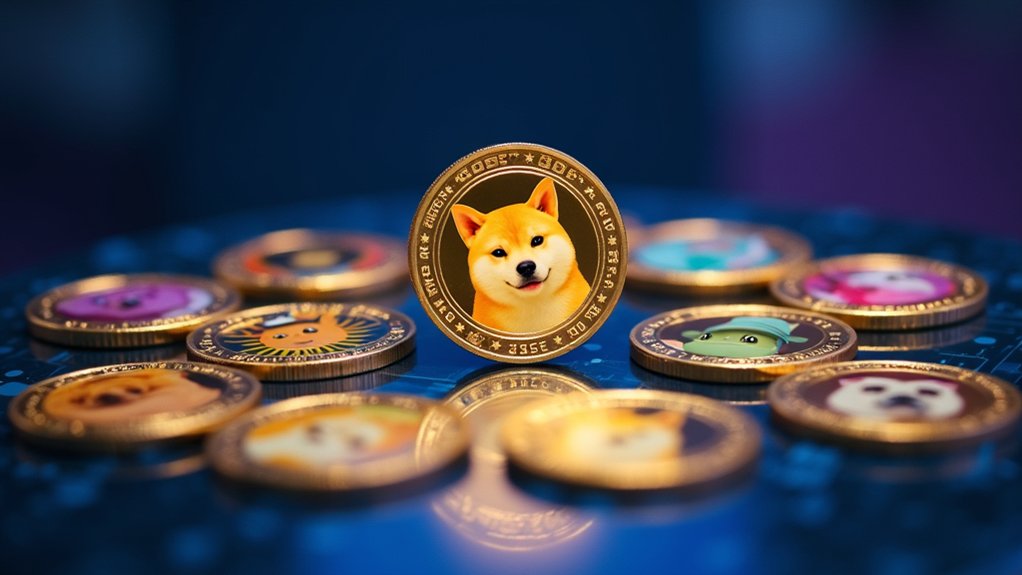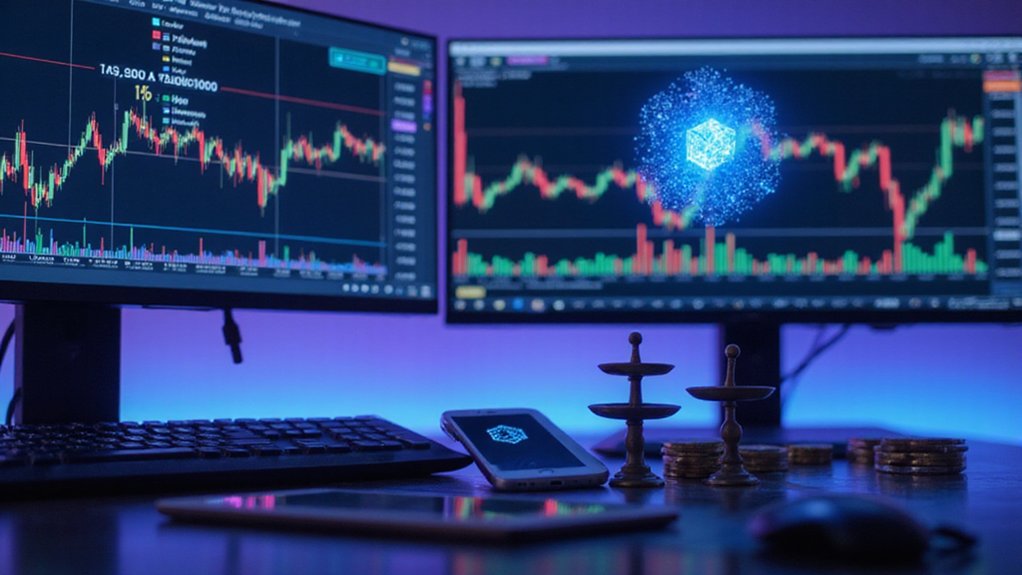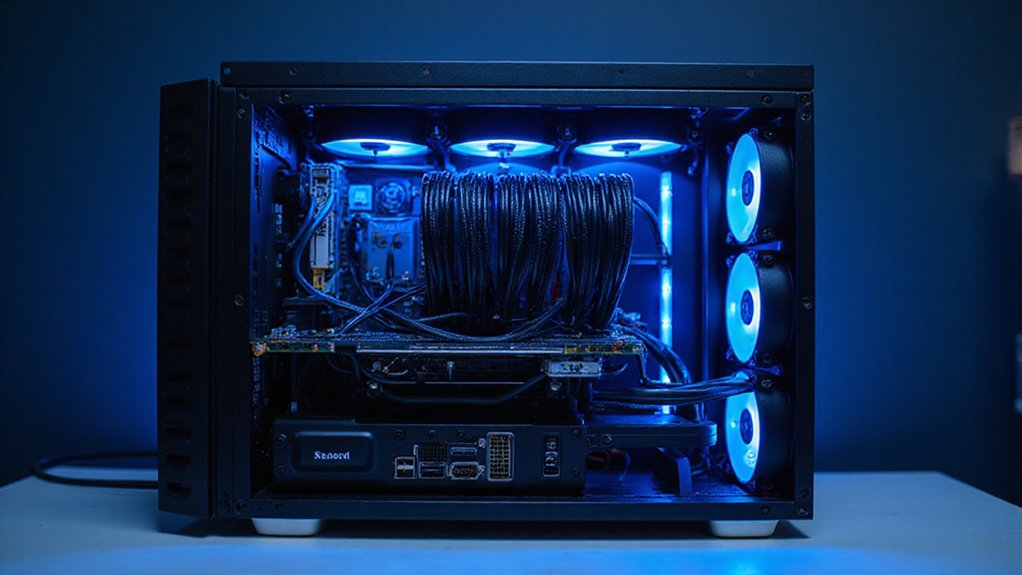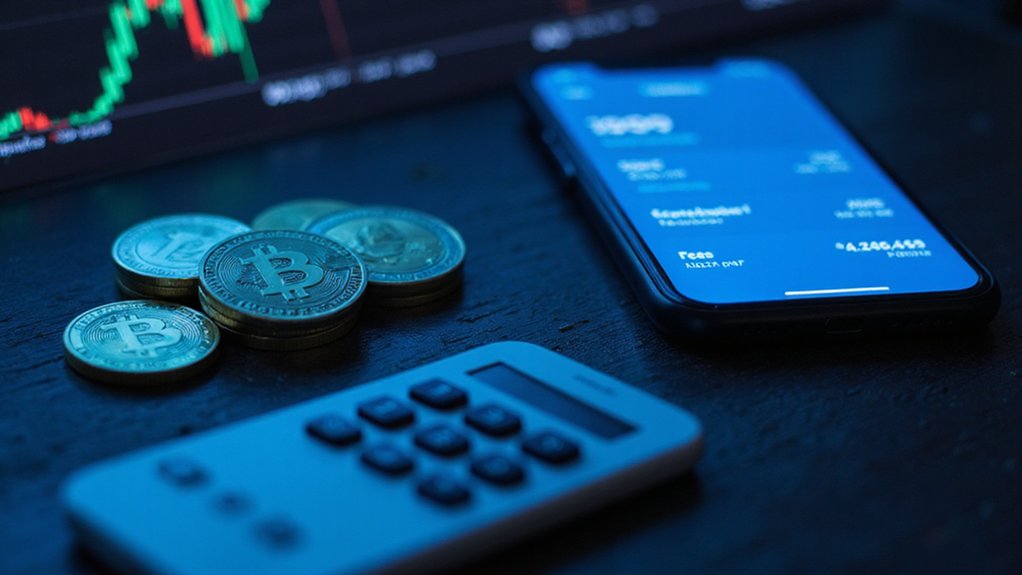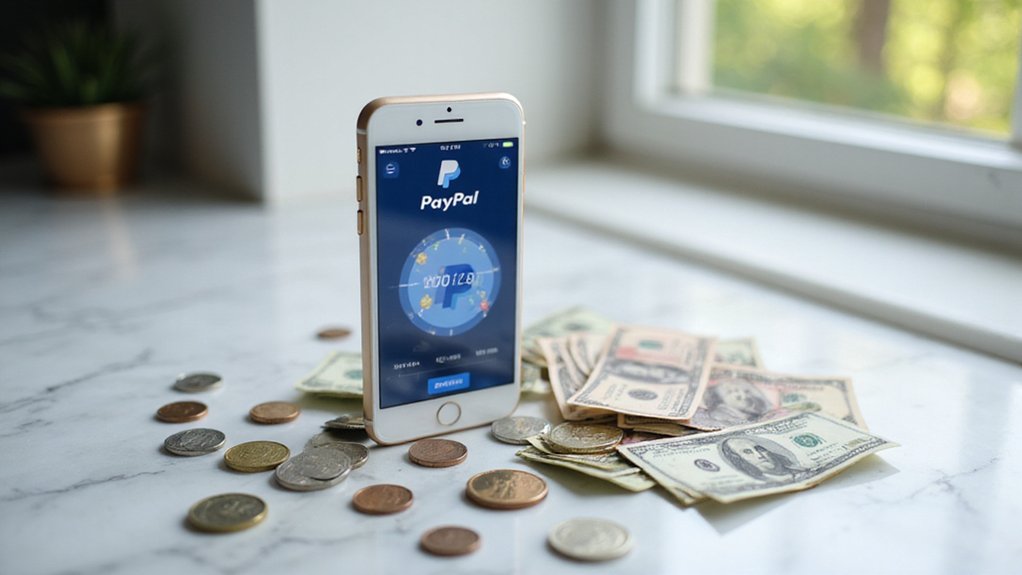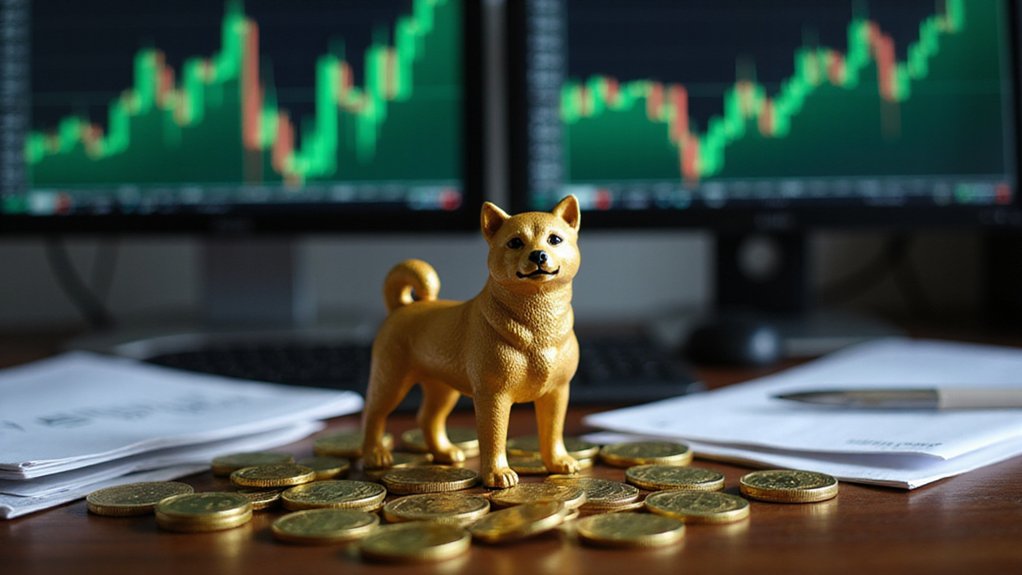Meme coin enthusiasts should watch DOGE and SHIB (the established veterans), alongside rising stars PEPE, BONK, and WIF in 2025. The Solana ecosystem remains particularly fertile ground, hosting both BONK and emergent platforms like Pump.Fun. Meanwhile, AIC and TRUMP tokens demonstrate surprising staying power despite market volatility. Investors seeking innovation might consider BTC Bull Token’s deflationary mechanisms or MIND of Pepe’s AI integration—though limiting exposure to 5% remains prudent financial hygiene.
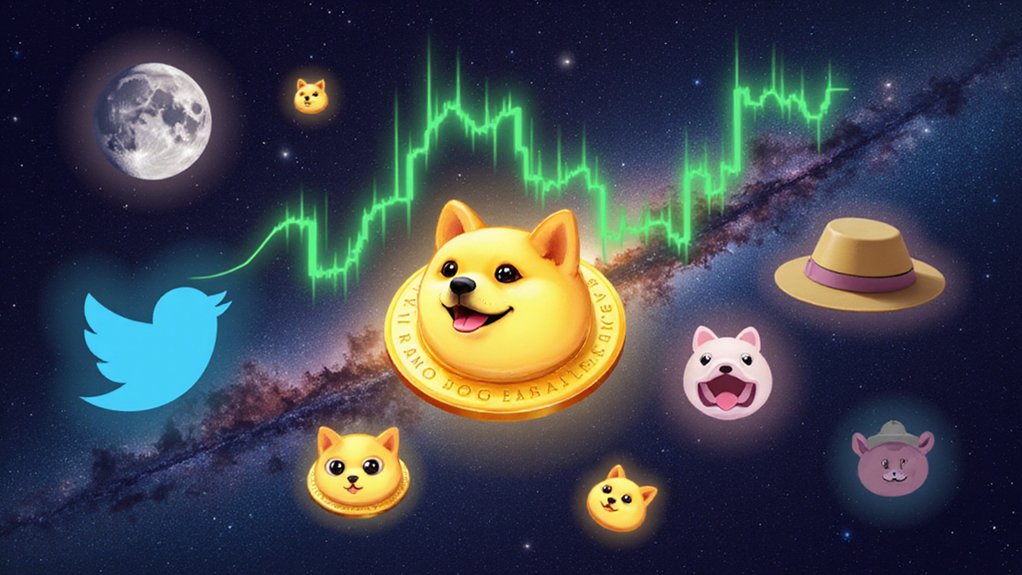
The cryptocurrency landscape of 2025 bears witness to a fascinating paradox: meme coins, once dismissed as frivolous experiments in digital asset creation, now command billions in market capitalization and mainstream attention.
At the vanguard of this peculiar digital revolution stands Dogecoin (DOGE), the progenitor of the meme coin phenomenon, whose enduring community support has cemented its position despite—or perhaps because of—its intentionally simplistic tokenomics.
Not far behind lurks Shiba Inu (SHIB), whose Ethereum-based infrastructure and Shibarium layer-2 solution have provided genuine utility beyond its canine branding.
Pepe (PEPE) continues its improbable ascent, leveraging amphibian-themed aesthetics to achieve remarkable 400%+ post-launch growth despite its staggering 420 trillion supply.
The Solana ecosystem hosts two formidable contenders: Bonk (BONK), whose viral social presence has translated into substantial market capitalization, and Dogwifhat (WIF), a relatively recent entrant whose hat-wearing canine mascot has captured investor imagination with surprising tenacity. The emergence of platforms like Pump.Fun in 2024 dramatically lowered the technical barriers to meme coin creation on Solana.
AIC has emerged as the current capitalization leader, trading at approximately $0.1676, while TRUMP tokens maintain their politically-charged valuation at $11.16 with recent double-digit growth.
The feline contingent makes its presence known through POPCAT, while FLOKI continues to leverage Norse mythology alongside cross-chain compatibility.
For investors seeking emerging opportunities, Gigachad taps into hypermasculine internet culture, while Solaxy pioneers Solana’s layer-2 scalability.
Specialized offerings like BTC Bull Token (with its Bitcoin milestone-triggered deflationary mechanisms) and the MIND of Pepe (combining AI functionality with the established Pepe brand) represent innovative hybrids.
Risk-tolerant investors should nonetheless remain cognizant of meme coins’ notorious volatility, regulatory uncertainties, and susceptibility to pump-and-dump schemes. Successful trading often requires staying informed about emerging trends on social media and using platforms like DexScreener to monitor market movements in real-time.
Prudent portfolio construction suggests limiting exposure to this asset class to a maximum 5% allocation—a measured approach to what remains, fundamentally, digital speculation predicated on internet culture.
Frequently Asked Questions
How Risky Are Meme Coins Compared to Established Cryptocurrencies?
Meme coins represent considerably higher risk ventures than established cryptocurrencies, exhibiting volatility profiles that would make even seasoned traders blanch.
While Bitcoin and Ethereum possess institutional adoption and technical fundamentals, meme tokens operate primarily on social sentiment—susceptible to influencer manipulation and abrupt abandonment.
Their unaudited smart contracts, liquidity constraints, and centralization vulnerabilities create a perfect storm of risk factors.
The meme coin landscape resembles financial Russian roulette, where occasional Dogecoin-like successes mask the overwhelming majority of projects that evaporate into digital dust.
What Exchanges Are Best for Trading Meme Coins?
For meme coin trading, Binance stands as the market leader with its extensive selection and liquidity, while MEXC offers perhaps the most extensive roster of emerging tokens.
Bitget and Bybit cater to more sophisticated traders with advanced tools and competitive fees.
For Solana-based meme coins specifically, Raydium and Orca provide specialized infrastructure.
Coinbase, despite its limited selection, remains the gateway exchange for beginners—though they’ll pay a premium for that user-friendly interface.
Are Meme Coins Suitable for Long-Term Investment Strategies?
Meme coins generally make poor long-term investments due to their fundamentally speculative nature.
While exceptions exist (Dogecoin’s surprising longevity comes to mind), most lack intrinsic utility and depend entirely on sustained social momentum—a notoriously fickle resource.
Their extreme volatility and regulatory uncertainty further complicate matters.
Prudent investors might allocate a small portion of their high-risk capital to these digital curiosities, but building retirement portfolios around such capricious assets would be, frankly, inadvisable.
How Do Tokenomics Affect a Meme Coin’s Potential Growth?
Tokenomics fundamentally shape a meme coin’s growth trajectory through supply-demand mechanics.
Fixed supply models create scarcity pressure, while burning mechanisms enhance long-term value retention.
Liquidity allocations (20-40% being ideal) stabilize trading, preventing wild swings that plague undercapitalized projects.
Meanwhile, transparent team allocations with proper vesting schedules prevent confidence-shattering dumps.
The most successful projects balance viral memetic appeal with structural protections against whale manipulation—a surprisingly delicate alchemy of cultural zeitgeist and economic engineering.
What Regulatory Challenges Do Meme Coins Face Globally?
Meme coins face a regulatory quagmire globally, with jurisdictional ambiguity being the primary challenge.
The SEC’s classification of most meme coins as non-securities creates oversight gaps, while different countries apply inconsistent regulatory frameworks.
Market manipulation and fraud flourish in this regulatory vacuum, exacerbated by social media-driven volatility.
International coordination remains elusive, with regulators struggling to balance innovation protection with investor safeguards.
Meanwhile, technological advancements continually outpace regulatory adaptations, leaving authorities perpetually playing catch-up with these mercurial assets.
